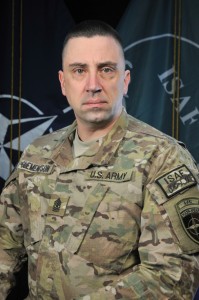ASKTOP.net Readers we will begin posting a series of Articles by leaders who have been there and done that. Many of them have learned lessons the hard way and want to share their lessons learned with you so that you don’t have to learn from the “SCHOOL OF HARD KNOCKS!”
So I would like to introduce you to our FIRST GUEST POST. It comes to us VIA- SGM Clementson. This article was previously posted on LINKEDIN. I would encourage you to look SGM Clementson on LinkedIn and follow his post. We hope to have him as an active contributor on ASKTOP.net
Leadership is an Investment.
We have some fantastic supervisors within our military’s enlisted ranks but the real mentors are far too few – and it is an area I lacked awareness and skill. This is not an argument on the difference between managers and leaders – this is about the level of investment leaders put into relationships with their subordinates.
I had many service members join my teams when I was a young sergeant leading sections. I followed our processes by the book – starting with the initial counseling to lay out expectations on professional culture, performance, and how to address problems through the chain of command. Each month we readdressed performance and pointed out any notable successes and areas for improvement. We might identify training opportunities or set them on a college track to boost their skill-set, which was all geared toward improving their work and sending them on to the next assignment a little better than when they arrived.
I was a good supervisor but I shortchanged many of these people because I was shortsighted. I know better now.
To be the kind of leader I want to be requires much more investment in our subordinates and in ourselves. A supervisor can follow organizational doctrine and be successful but a good mentor has to open many more doors to increase their knowledge and arm themselves with useful tools they can leverage to develop their people beyond professional acumen.
We all have dreams and are eager for someone to believe and invest in those dreams. Many of the young people I’ve encountered have goals that take them beyond a stint or two with the Army, and from a big picture perspective it is more than okay. There are only a finite number of senior positions for our young people to work toward and it is a highly competitive climb.
However you decide to approach your mentoring role it should genuinely reflect who you are and play to your strengths and expertise. My military background lends a specific approach to planning that I incorporate whenever I take on a new protégé. Here are a few steps that work for me:
Find and focus the vision.
Mentoring starts with trust and genuine conversation about goals and aspirations. The ‘five year plan’ is cliché but it is important to visualize the road to the end state. I often charge my protégés to develop a vision statement we can discuss and refine as the plan takes shape. Vision statements should incorporate the whole person, including health, leisure, education, and family as part of the conversation. These elements significantly impact what would otherwise comprise significant gaps.
Draft measureables.
Your protégé needs to define each element of the vision statement individually. Maybe that includes attaining a specific graduate degree or credential. It might also spell out a specific management position. In the end you’ll have a series of clear conditions or statements that demonstrate how to achieve the vision. Not only do these statements allow you to measure effectiveness, it is a great tool to help your protégé maintain the right azimuth.
Backwards plan.
For each condition there are steps to take along the way. If the goal is to become a managing director then identify and map the positions from that goal. Think like a person whose goal is to run a marathon. In order to reach 26 miles on date x they must be able to run 20 miles by date y. Continue working backward to connect the target with the present and repeat for each condition to build a solid map.
Prioritize.
Not all conditions are equal within the vision formula. Talk about the importance of each and categorize their priority within the overall equation. Some goals may change over time for a variety of reasons, particularly as they overlap or conflict.
Gather outside investors.
Just because you’ve formulated a great plan on paper, don’t forget there are others who get a vote because they are also affected. It is a really good idea for your protégé to talk through this plan with their stakeholders – a spouse or other important people in their life. Stakeholders who understand the vision and the map are more likely to support the effort, and they understand each element’s priority so they can decide where and when to lend support. Don’t be surprised when the map changes based on stakeholder input – it’s a good thing to have buy-in.
Conduct routine azimuth checks.
Every person and plan requires varying levels of coaching along the way. Sometimes that might mean revisiting the plan biweekly, monthly, or less often. You’re looking for factors that may necessitate slight changes to the plan, or to offer advice on adjustments to reach certain steps. You may find over time that the current plan looks much different than the original plan but don’t worry because it is your protégé’s map to reach their vision.
Don’t make them drink.
This level of investment isn’t for every person you work with. You have to decide, based on each individual, how much time and effort makes sense. You might encounter a person who doesn’t share yours or the organization’s values or is simply there to meet an end of their own design. These are examples of people who require a leader to supervise over the short term; this is an opportunity to save white space for others. Lead them to water and let them decide whether or not to drink; it is their plan and they assume the risk and reward.
What you have at the end of a successful journey is immeasurable.
The true rewards of leadership come from leadership itself – not the next promotion or tangible reward. Do not seek rewards; leadership is its own reward.” Gen. (Ret) Normal Schwarzkopf

About the author
Sergeant Major Thomas D. Clementson serves as the senior enlisted leader for the XVIII Airborne Corps Public Affairs Office. He has multiple deployments to Iraq and Afghanistan. SGM Clementson sits on a variety of boards and councils that make decisions affecting public affairs Soldiers and their families and routinely works to shape force structure and doctrinal changes for the future force. He is currently working on a Masters in Leadership Studies degree from the University of Texas – El Paso. He is a member of the Public Relations Society of America, the National Communication Association, and the Golden Key International Honour Society. He is married with three children, is an active runner, enjoys playing hockey, coaching youth sports, and is an avid reader.
.















Comments
facebook_ronald.l.nelsonjr
It’s been a while since I have been to Asktop.net, but something inside me said I should check up on the website. I was surprised to see an article on Leadership, it’s not that I wouldn’t expect an article on the topic, it’s more that I had discussed the importance of Leadership and Mentorship with our unit and this article touched on a lot of the things I have planned for my NCODP later this month.
SGM Clementson start his article talking about leaders that lead by the book, they do everything that the Army and their Commanders ask of them, but don’t quite connect to their Soldiers. I have several young leaders in my Reserve unit that are just like that. They do the counselings they are told to do; they make sure all their Soldiers check all the blocks to ensure they are off our “nasty gram lists” and then forget about the Army until the Commander or First Sergeant calls with the next list. While these types of leaders are not bad, I feel they lose connection with their Soldiers, and each generation of Leaders becomes less and less connected.
Investing in your leadership and mentoring your subordinates is becoming more and more rare (or at least in the Army Reserves) and I like the method that that SGM Clementson discussed in this article. When you take the time to show your Soldiers that you are invested in them, it shows in their investment in the Army. When I PCS’d to my current unit I heard many times from leaders and Soldiers within the unit “Well I use to be motivated or I used to care, but I feel like the leadership doesn’t care about me.” I will be honest; I couldn’t believe what I was hearing. I had to take a step back and look at how the NCO and Officer were conducting business and it turned out that all the NCO’s were just checking the box, making sure their Soldiers were on the “nasty gram list” then checking out. I couldn’t believe it; I started to talk to the Soldiers and the NCOs to figure out why things were the way they were. Come to find out, like the Soldiers they were leading now, they too didn’t receive any kind of mentorship or guidance. When it came time for them to step up, they were told, these are your people, these are your lists, make sure your Soldiers are good to go. Because the Leaders before them didn’t invest in them, they didn’t know how to invest in their Soldiers when it became their turn to lead.
So where do we go from here? SGM Clementson’s plan is a good start, sit down with your Soldiers, figure out who they are, what they like, where they want to be, and then help them achieve their goals, but don’t forget to achieve your goals too. This was an excellent article and I hope that all the leaders that read it take stock, if you are one of these leaders that just follow the book and check the block, try new things, like SGM Clementson said, you have to play to your strengths, but you should also work on your shortfalls, and in mentorship is your shortfall, try out some new ideas. – SSG Nelson
SGM Tom Clementson
SSG Nelson – Looks to me like you’re off to a good start with your new unit simply by making some keen observations on the climate. While we often cannot change the pieces we might like, we can influence much simply by doing what we know is right. In situations like the one you described I’ve taken a couple of approaches that seem to work. First, create systems that make meeting the command’s requirements more efficient. The time you’re able to save give you the bandwidth to go the extra mile in mentoring your troops. Second – once you’ve started mentoring at the individual level and have a better understanding of who your people really are – look for ways to develop the whole team. The team should have a vision and understand who they are collectively – you can drive that within your team but their input is important. It should be based on not only who they are but the command’s priorities and mission. When you are able to nest these things everyone will be able to execute based on the commander’s intent, coupled with their individual and collective strengths. You’ll find that this inclusive approach will not only serve as an azimuth for your troops, but gives them buy-in that keeps the machine running in an absence of guidance or during a crisis. Too often we discount what our Soldiers can teach us – a missed opportunity in every case.
Mark Gerecht
SSG Nelson,
Thanks for your feedback and support of ASKTOP.net We are always looking to help folks grow as leaders. If you would like to share your experience and lessons learned please consider writing an article for ASKTOP.net!
Thanks Again
TOP